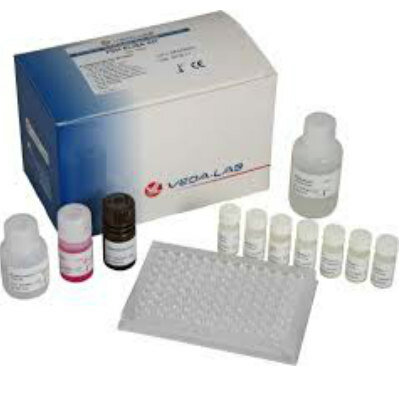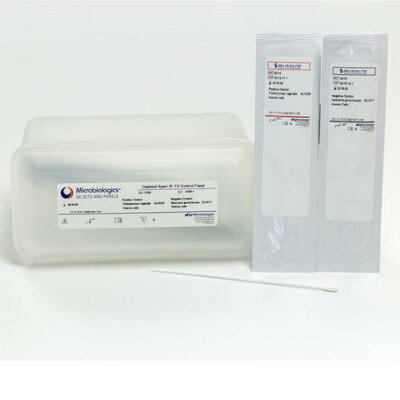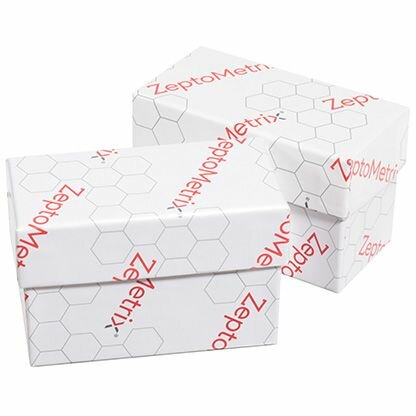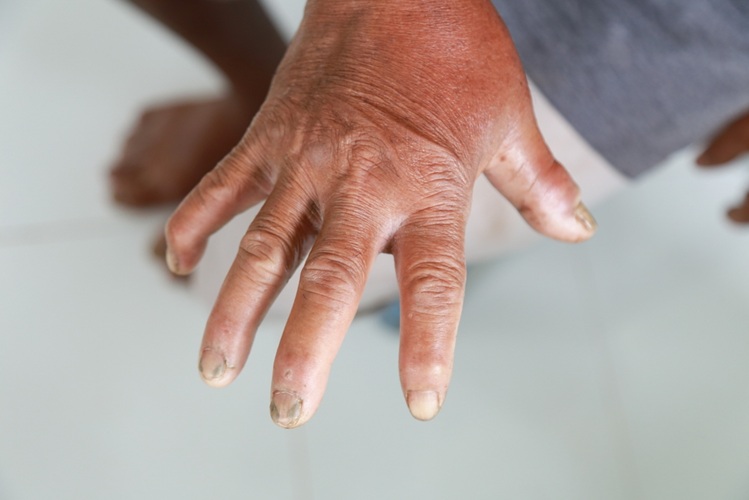Diagnostic Methods Compared for Fecal Helminth Eggs
|
By LabMedica International staff writers Posted on 24 Jun 2018 |
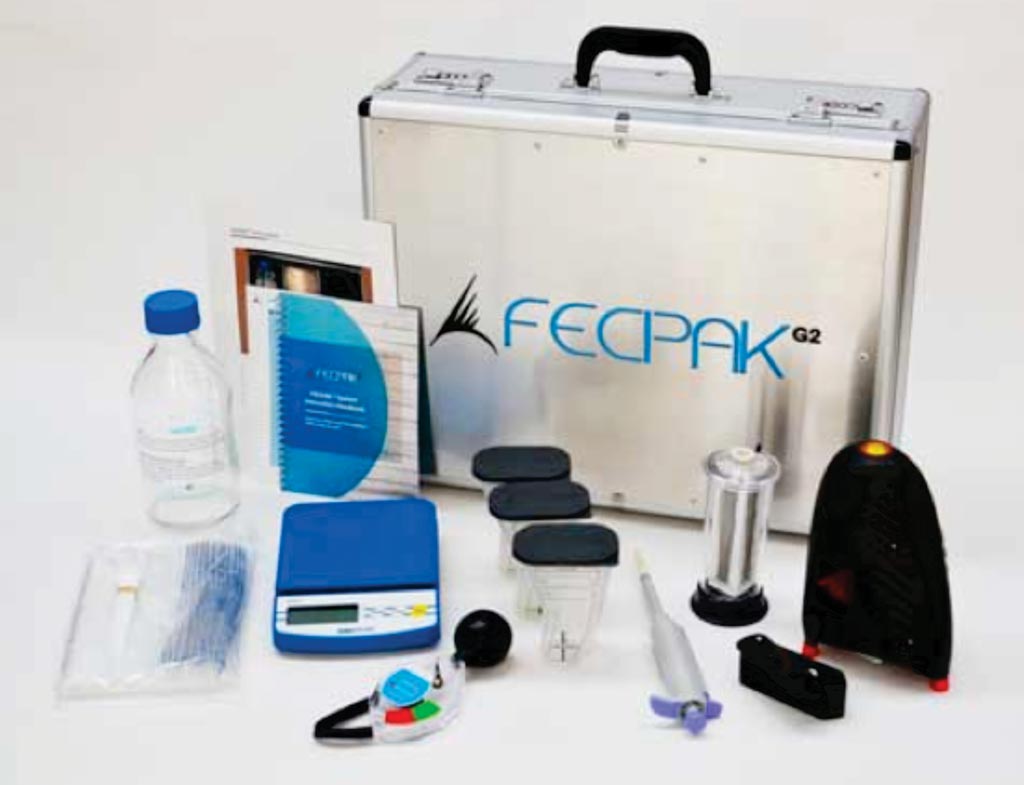
Image: The FECPAKG2 is a complete remote-location parasite assessment tool (Photo courtesy of Techion Group).
For estimating prevalence of soil-transmitted helminthiasis, assessing infection intensities, evaluating drug efficacy and monitoring drug resistance, accurate diagnostic methods are essential. The currently recommended Kato-Katz method has already been in use for decades.
A comparison has been made between the Kato-Katz method and a novel method, which is an online, remote location, parasite diagnostic system previously used in veterinary medicine. The new method is based on the flotation-dilution principle and its novelty is the accumulation of parasite eggs into one viewing area within a fluid meniscus.
An international team of scientists working with the Swiss Tropical and Public Health Institute (Basel, Switzerland) collected two stool samples from adolescent participants (age 15–18 years) at baseline and 14 to 21 days after treatment in the framework of a randomized clinical trial on Pemba Island, Tanzania. Stool samples were analyzed with different diagnostic efforts: i) one or ii) two Kato-Katz thick smears from the first sample, iii) two Kato-Katz thick smears from two samples and iv) FECPAKG2 from the first sample. For FECPAKG2 an image of the fecal sample was then captured, and stored offline on a computer and uploaded onto a cloud once connected to the Internet. Subsequently, the image can be analyzed at any time by specialists around the world.
The team reported that complete data for all diagnostic efforts were available from 615 participants at baseline and 231 hookworm-positive participants at follow-up. At baseline FECPAKG2 revealed a sensitivity of 75.6% (72.0–77.7) for detecting Ascaris lumbricoides, 71.5% (67.4–95.3) for hookworm and 65.8% (64.9–66.2) for Trichuris trichiura, which was significantly lower than any of the Kato-Katz methods and highly dependent on infection intensity. Despite that the egg counts based on FECPAKG2 were relatively lower compared to Kato-Katz by a ratio of 0.38 (0.32–0.43) for A. lumbricoides, 0.36 (0.33–0.40) for hookworm and 0.08 (0.07–0.09) for T. trichiura, the egg reduction rates (ERR) were correctly estimated with FECPAKG2.
The authors concluded that the sensitivity to identify any soil-transmitted helminthes (STH) infection was considerably lower for FECPAKG2 compared to Kato-Katz. Following rigorous development, FECPAKG2 might be an interesting tool with unique features for epidemiological and clinical studies. The study was published on June 4, 2018 in the journal Public Library of Science Neglected Tropical Diseases.
Related Links:
Swiss Tropical and Public Health Institute
A comparison has been made between the Kato-Katz method and a novel method, which is an online, remote location, parasite diagnostic system previously used in veterinary medicine. The new method is based on the flotation-dilution principle and its novelty is the accumulation of parasite eggs into one viewing area within a fluid meniscus.
An international team of scientists working with the Swiss Tropical and Public Health Institute (Basel, Switzerland) collected two stool samples from adolescent participants (age 15–18 years) at baseline and 14 to 21 days after treatment in the framework of a randomized clinical trial on Pemba Island, Tanzania. Stool samples were analyzed with different diagnostic efforts: i) one or ii) two Kato-Katz thick smears from the first sample, iii) two Kato-Katz thick smears from two samples and iv) FECPAKG2 from the first sample. For FECPAKG2 an image of the fecal sample was then captured, and stored offline on a computer and uploaded onto a cloud once connected to the Internet. Subsequently, the image can be analyzed at any time by specialists around the world.
The team reported that complete data for all diagnostic efforts were available from 615 participants at baseline and 231 hookworm-positive participants at follow-up. At baseline FECPAKG2 revealed a sensitivity of 75.6% (72.0–77.7) for detecting Ascaris lumbricoides, 71.5% (67.4–95.3) for hookworm and 65.8% (64.9–66.2) for Trichuris trichiura, which was significantly lower than any of the Kato-Katz methods and highly dependent on infection intensity. Despite that the egg counts based on FECPAKG2 were relatively lower compared to Kato-Katz by a ratio of 0.38 (0.32–0.43) for A. lumbricoides, 0.36 (0.33–0.40) for hookworm and 0.08 (0.07–0.09) for T. trichiura, the egg reduction rates (ERR) were correctly estimated with FECPAKG2.
The authors concluded that the sensitivity to identify any soil-transmitted helminthes (STH) infection was considerably lower for FECPAKG2 compared to Kato-Katz. Following rigorous development, FECPAKG2 might be an interesting tool with unique features for epidemiological and clinical studies. The study was published on June 4, 2018 in the journal Public Library of Science Neglected Tropical Diseases.
Related Links:
Swiss Tropical and Public Health Institute
Latest Microbiology News
- Handheld Device Delivers Low-Cost TB Results in Less Than One Hour
- New AI-Based Method Improves Diagnosis of Drug-Resistant Infections
- Breakthrough Diagnostic Technology Identifies Bacterial Infections with Almost 100% Accuracy within Three Hours
- Innovative ID/AST System to Help Diagnose Infectious Diseases and Combat AMR
- Gastrointestinal Panel Delivers Rapid Detection of Five Common Bacterial Pathogens for Outpatient Use
- Rapid PCR Testing in ICU Improves Antibiotic Stewardship
- Unique Genetic Signature Predicts Drug Resistance in Bacteria
- Unique Barcoding System Tracks Pneumonia-Causing Bacteria as They Infect Blood Stream
- Rapid Sepsis Diagnostic Test Demonstrates Improved Patient Care and Cost Savings in Hospital Application
- Rapid Diagnostic System to Detect Neonatal Sepsis Within Hours
- Novel Test to Diagnose Bacterial Pneumonia Directly from Whole Blood
- Interferon-γ Release Assay Effective in Patients with COPD Complicated with Pulmonary Tuberculosis
- New Point of Care Tests to Help Reduce Overuse of Antibiotics
- 30-Minute Sepsis Test Differentiates Bacterial Infections, Viral Infections, and Noninfectious Disease
- CRISPR-TB Blood Test to Enable Early Disease Diagnosis and Public Screening
- Syndromic Panel Provides Fast Answers for Outpatient Diagnosis of Gastrointestinal Conditions
Channels
Clinical Chemistry
view channel
‘Brilliantly Luminous’ Nanoscale Chemical Tool to Improve Disease Detection
Thousands of commercially available glowing molecules known as fluorophores are commonly used in medical imaging, disease detection, biomarker tagging, and chemical analysis. They are also integral in... Read more
Low-Cost Portable Screening Test to Transform Kidney Disease Detection
Millions of individuals suffer from kidney disease, which often remains undiagnosed until it has reached a critical stage. This silent epidemic not only diminishes the quality of life for those affected... Read more
New Method Uses Pulsed Infrared Light to Find Cancer's 'Fingerprints' In Blood Plasma
Cancer diagnoses have traditionally relied on invasive or time-consuming procedures like tissue biopsies. Now, new research published in ACS Central Science introduces a method that utilizes pulsed infrared... Read moreMolecular Diagnostics
view channel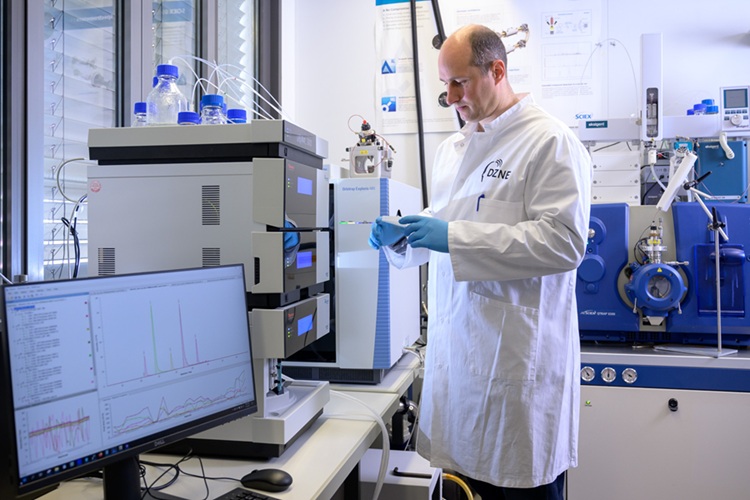
Blood Biomarker Test Could Detect Genetic Predisposition to Alzheimer’s
New medications for Alzheimer’s disease, the most common form of dementia, are now becoming available. These treatments, known as “amyloid antibodies,” work by promoting the removal of small deposits from... Read more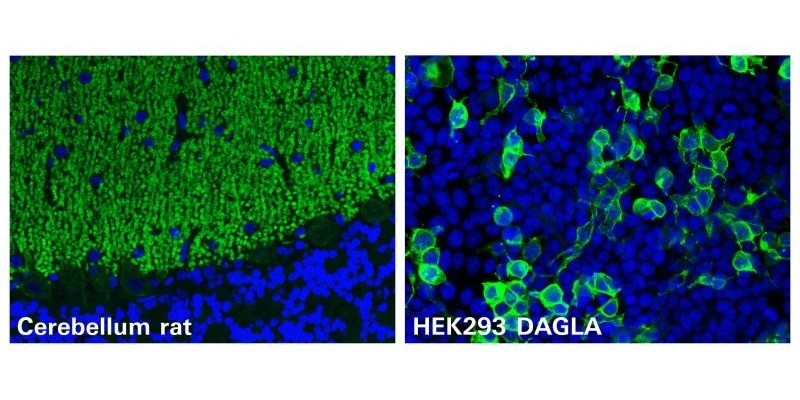
Novel Autoantibody Against DAGLA Discovered in Cerebellitis
Autoimmune cerebellar ataxias are strongly disabling disorders characterized by an impaired ability to coordinate muscle movement. Cerebellar autoantibodies serve as useful biomarkers to support rapid... Read more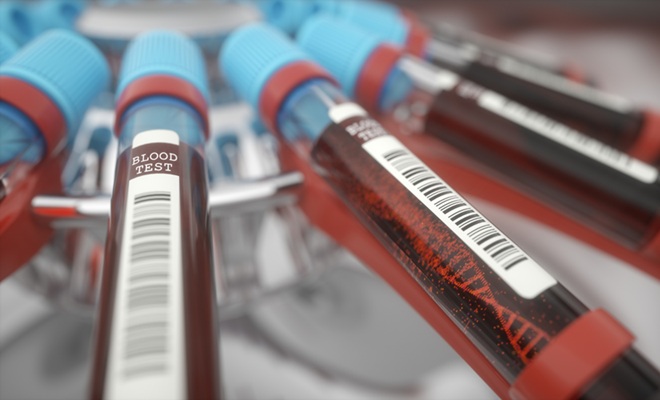
Gene-Based Blood Test Accurately Predicts Tumor Recurrence of Advanced Skin Cancer
Melanoma, an aggressive form of skin cancer, becomes extremely difficult to treat once it spreads to other parts of the body. For patients with metastatic melanoma tumors that cannot be surgically removed... Read moreHematology
view channel
New Scoring System Predicts Risk of Developing Cancer from Common Blood Disorder
Clonal cytopenia of undetermined significance (CCUS) is a blood disorder commonly found in older adults, characterized by mutations in blood cells and a low blood count, but without any obvious cause or... Read more
Non-Invasive Prenatal Test for Fetal RhD Status Demonstrates 100% Accuracy
In the United States, approximately 15% of pregnant individuals are RhD-negative. However, in about 40% of these cases, the fetus is also RhD-negative, making the administration of RhoGAM unnecessary.... Read moreImmunology
view channel
Stem Cell Test Predicts Treatment Outcome for Patients with Platinum-Resistant Ovarian Cancer
Epithelial ovarian cancer frequently responds to chemotherapy initially, but eventually, the tumor develops resistance to the therapy, leading to regrowth. This resistance is partially due to the activation... Read more
Machine Learning-Enabled Blood Test Predicts Immunotherapy Response in Lymphoma Patients
Chimeric antigen receptor (CAR) T-cell therapy has emerged as one of the most promising recent developments in the treatment of blood cancers. However, over half of non-Hodgkin lymphoma (NHL) patients... Read morePathology
view channel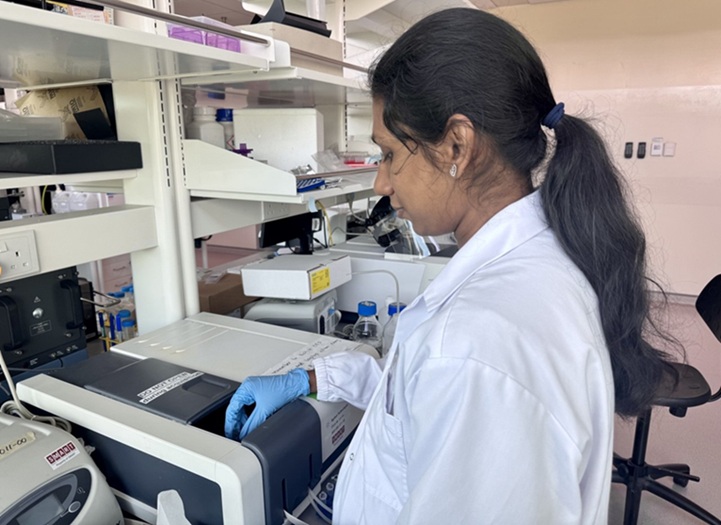
Novel UV and Machine Learning-Aided Method Detects Microbial Contamination in Cell Cultures
Cell therapy holds great potential in treating diseases such as cancers, inflammatory conditions, and chronic degenerative disorders by manipulating or replacing cells to restore function or combat disease.... Read more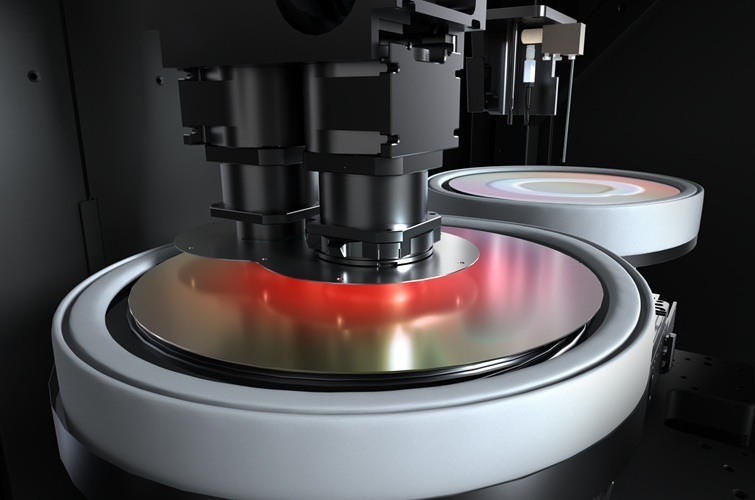
New Error-Corrected Method to Help Detect Cancer from Blood Samples Alone
"Liquid biopsy" technology, which relies on blood tests for early cancer detection and monitoring cancer burden in patients, has the potential to transform cancer care. However, detecting the mutational... Read more
"Metal Detector" Algorithm Hunts Down Vulnerable Tumors
Scientists have developed an algorithm capable of functioning as a "metal detector" to identify vulnerable tumors, marking a significant advancement in personalized cancer treatment. This breakthrough... Read more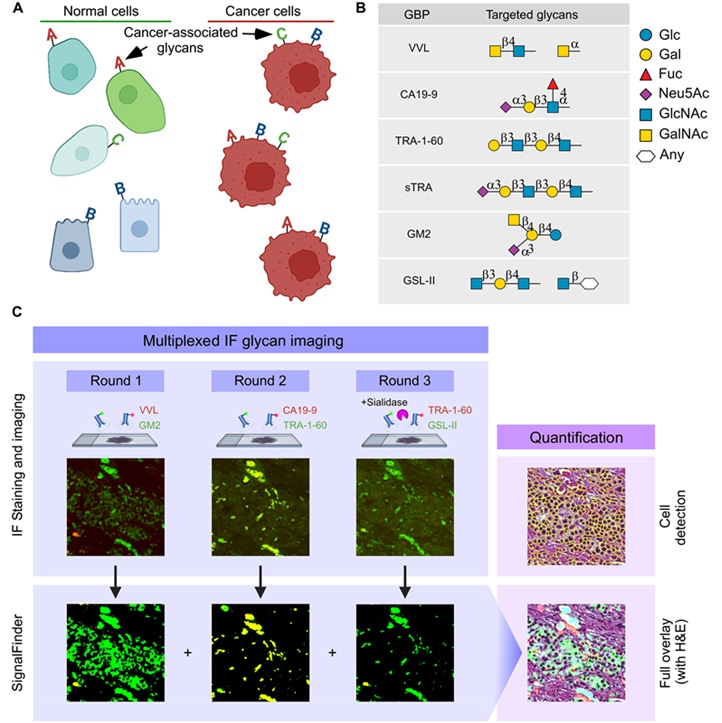
Novel Technique Uses ‘Sugar’ Signatures to Identify and Classify Pancreatic Cancer Cell Subtypes
Pancreatic cancer is often asymptomatic in its early stages, making it difficult to detect until it has progressed. Consequently, only 15% of pancreatic cancers are diagnosed early enough to allow for... Read moreTechnology
view channel
Disposable Microchip Technology Could Selectively Detect HIV in Whole Blood Samples
As of the end of 2023, approximately 40 million people globally were living with HIV, and around 630,000 individuals died from AIDS-related illnesses that same year. Despite a substantial decline in deaths... Read more
Pain-On-A-Chip Microfluidic Device Determines Types of Chronic Pain from Blood Samples
Chronic pain is a widespread condition that remains difficult to manage, and existing clinical methods for its treatment rely largely on self-reporting, which can be subjective and especially problematic... Read more
Innovative, Label-Free Ratiometric Fluorosensor Enables More Sensitive Viral RNA Detection
Viruses present a major global health risk, as demonstrated by recent pandemics, making early detection and identification essential for preventing new outbreaks. While traditional detection methods are... Read moreIndustry
view channel
Cepheid and Oxford Nanopore Technologies Partner on Advancing Automated Sequencing-Based Solutions
Cepheid (Sunnyvale, CA, USA), a leading molecular diagnostics company, and Oxford Nanopore Technologies (Oxford, UK), the company behind a new generation of sequencing-based molecular analysis technologies,... Read more
Grifols and Tecan’s IBL Collaborate on Advanced Biomarker Panels
Grifols (Barcelona, Spain), one of the world’s leading producers of plasma-derived medicines and innovative diagnostic solutions, is expanding its offer in clinical diagnostics through a strategic partnership... Read more




